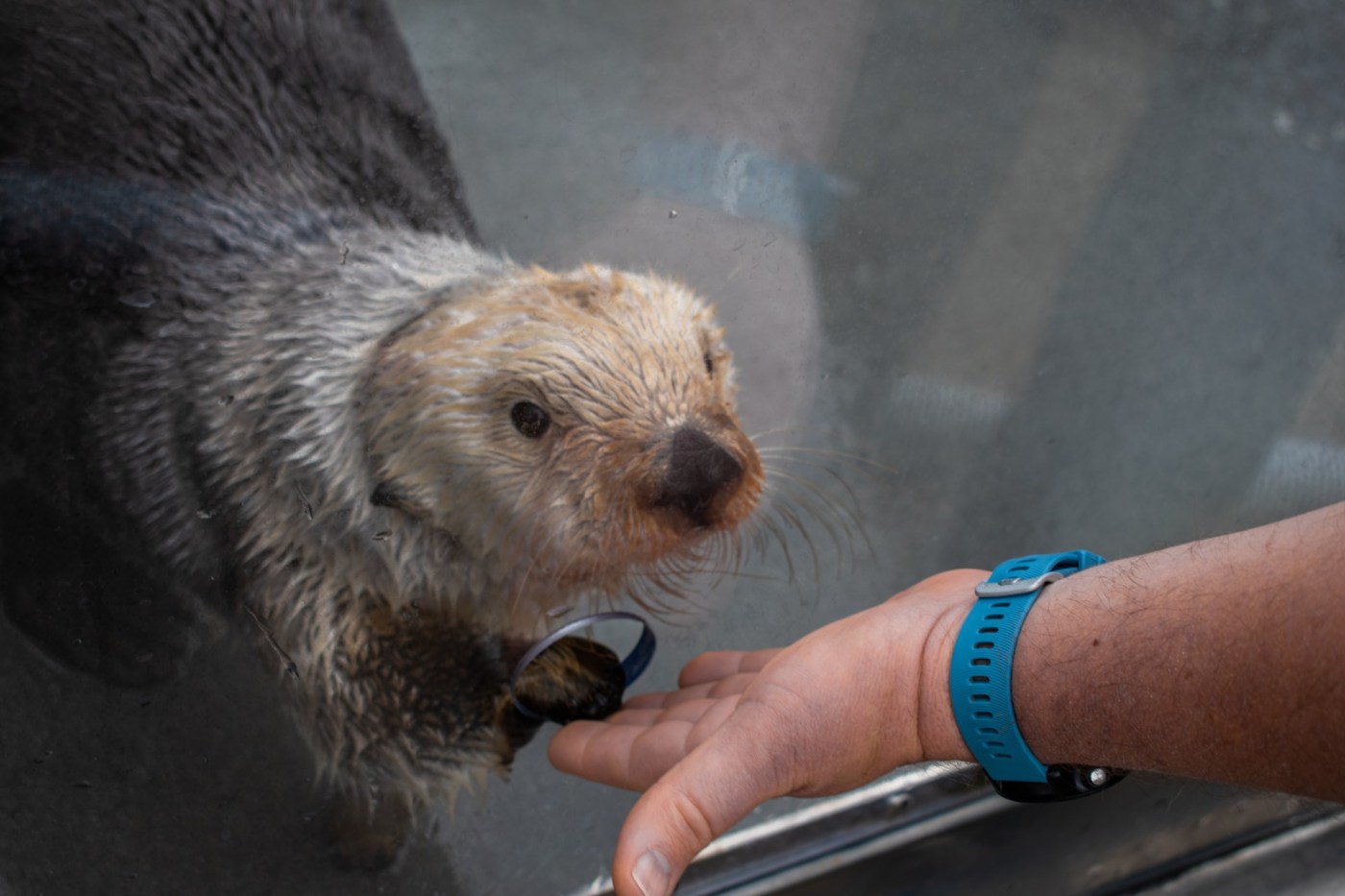MONTEREY — On-call staff members at the Monterey Bay Aquarium’s sea otter rescue and conservation program rescued a six-month-old otter stranded on San Carlos Beach in July. She was emaciated and lethargic.
The initial investigation by Dr. Ri Chang, the aquarium’s veterinarian, found intense inflammation in her stomach and bits and pieces of sand crab in her feces. These symptoms, combined with her age, dehydration, emaciation and lethargy, resulted in an initial diagnosis of a common parasitic infection called acanthocephalan peritonitis, also known as AP.
RELATED: Puckish sea otters continue surf board-stealing ways at Santa Cruz beach
Chang kept their expectations realistic for the otter’s recovery — AP has taken the lives of nearly a quarter of southern sea otters over the past three decades.
Related Articles
Recreational crab season opens along the Sonoma Coast as state warns of biotoxin risk
Rabid bat found near San Mateo County park
NOAA reports spike in whale entanglements off California coast, latest bad news in year of threats in and out of the ocean
5 wolves killed in Northern California by wildlife agents
What critter is swallowing acorns and leaving evidence?
But the chances for this otter’s survival were not shrouded in fear and uncertainty as they were for countless earlier otters. Knowledge about this deadly disease — where it comes from, how it spreads, and ultimately, how to treat it — has come a long way in the past few years.
A July study by Stanford University’s Dr. Richard Grewelle made big strides by confirming the seasonal and geographical disease trends. Grewelle and his team analyzed decades of data from otter deaths and found that southern sea otters are most often contracting the disease as pups in sandy habitats where Pacific mole crabs abound.
Chang was soon able to formally diagnose the otter with AP. What came next was treatment.
The toll of infection
AP is a disease caused by parasitic worms. A seabird or shorebird consumes the parasite, which matures and lays eggs inside of it. The birds expel those eggs in their fecal matter over the ocean. Mole crabs, when filter feeding, will ingest these eggs. A sea otter then eats that crab and becomes infected with AP.
“The problem is that otters are more vulnerable to the disease,” Grewelle says.
Because the sea otter is not the right type of host for the parasite, for reasons biologists don’t know, the parasite will do its best to escape by burrowing holes through the otter’s intestines. These internal punctures allow for bacteria to leak into the otter’s abdomen. Its immune system works overtime to respond to the disease, preventing it from using that precious energy to forage for food.
The inability to hunt while sick is particularly troubling for Monterey Bay’s marine mammal sweethearts because they need to consume a quarter of their weight in calories daily to survive.
“They’re kind of living on the edge,” even when healthy, Grewelle says.
Former USGS ecologist and independent researcher, Dr. Tim Tinker describes sea otters as “swimming furnaces” because they use their rapid metabolism to stay warm in cold waters. Without blubber or body fat, they need the internal thermal regulation from metabolism — which demands constant feeding as fuel. In their sickly state, the hiatus from hunting causes them to quickly become weak and emaciated.
New findings on the disease
The life cycle of the parasite is well known. What Grewelle and his team brought to light was confirmation of some of the speculated risk factors of the disease. They analyzed three decades of data on otter mortality in Monterey Bay from the California Department of Fish and Wildlife. The size of the dataset allowed them to identify geographic and long-term trends in otter infections and deaths. One of the most important corroborations from the study was the seasonality of infection, adding “meat to the skeleton of things we already had a sense of,” Tinker says. The study “ties together really nicely all of these things — the foraging ecology, the timing of reproduction, the habitat association.”
Otters born in the winter pupping season were often infected with AP in late May, right around the time when they would finish weaning from their mothers and emerge as independent yet inexperienced foragers. They go for easy prey, such as mole crabs which live on the sandy coast of Monterey Bay.
Grewelle’s team paid careful attention to the population dynamics of mole crabs, whose springtime abundance plays a big role in otter pup infection. This focus allowed them to zero in on the location, the sandy embayments, and the timing, spring and summer, as consistent factors of infection. “It’s very much a wrong place at the wrong time sort of scenario,” Tinker says.
Future directions
The latest research adds a dimension of clarity to sea otter health. So do new discoveries about the ways to treat AP-infected sea otters. A laparoscopy confirmed the otter — who was found in the summer on a sandy beach — brought into Chang’s office was infected with AP. The veterinary team had learned by this point that frequent, small feedings — in addition to worm medication — were needed for recovery. Providing small amounts of food to the starving otters, no matter how counterintuitive, is essential to preventing the holes in their intestines from stretching and potentially worsening their infection. They fed her hourly for about six weeks until she was up to a regular diet. Her body condition dramatically improved and the “feisty little otter,” was released back to Pacific Grove in September.
Chang describes the successful release of the otter as an “incredible win . . . speaks to how much effort went into the past to figure out how best to manage these cases.”
There are big picture possibilities in the trajectory of regional otter health, too. Some ecologists have proposed the reintroduction of sea otters into the historic range of their habitat, which spanned Oregon’s Central Coast all the way south to Baja California, Mexico. Restoring this range could spread out the population and reduce the competition for safer food options that they face in habitats constrained by carrying capacity, such as Monterey Bay. In the San Francisco Bay, mole crabs are less of a problem, because they have to live among open shoreline waves for filter feeding. But otters haven’t populated the San Francisco Bay or other regions in their historical range for decades. Reintroduction comes with plenty of its own uncertainty, Grewell notes.
His team is also following climate change’s impact on otter health. The climate induced rise of ocean temperatures could give way to more intense crab reproduction, and potentially, more cases of AP.
Whatever the future holds for southern sea otters, their population health has outsized influence on the region.
“Ocean health and human health are intricately and intimately connected. If we lose otters in the ecosystem, we will feel those effects,” Chang says.
Tinker says, “there are quite a number of diseases that sea otters get sick from or die from that humans also get sick from and die from…..understanding disease ecology in sea otters is helping us to understand disease ecology in humans.”





